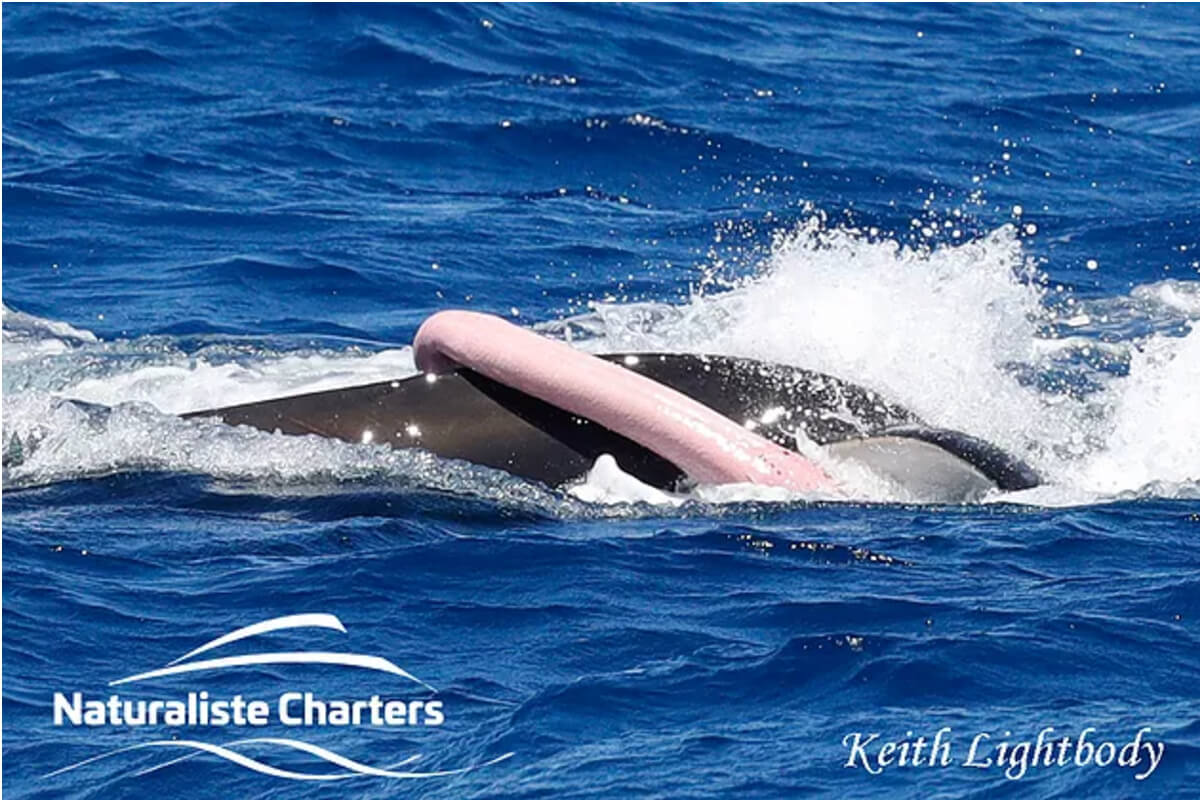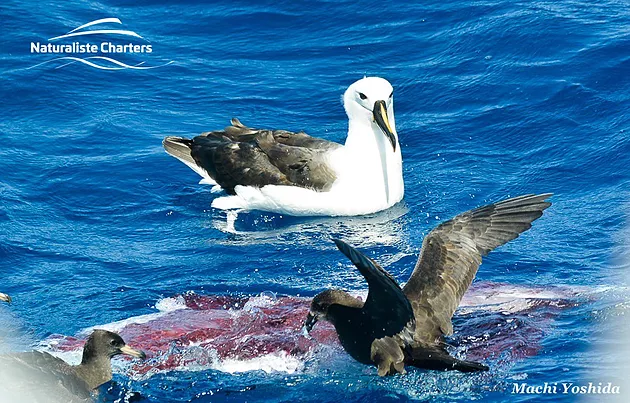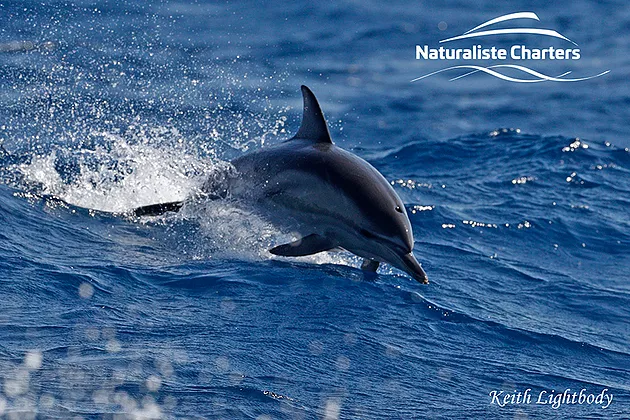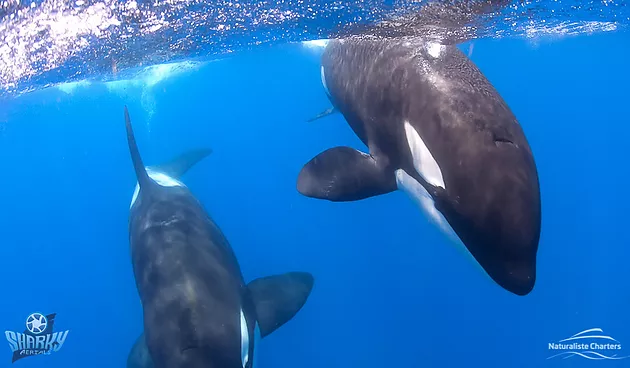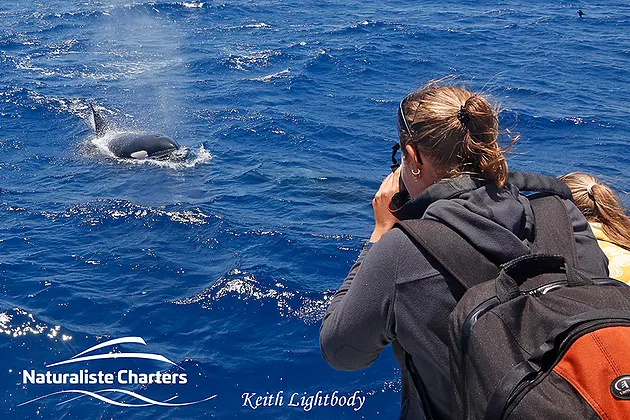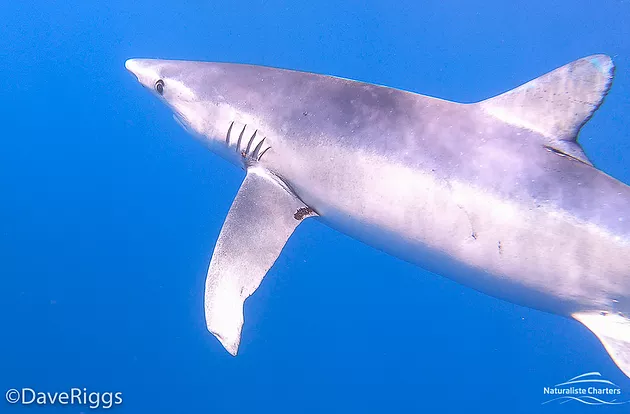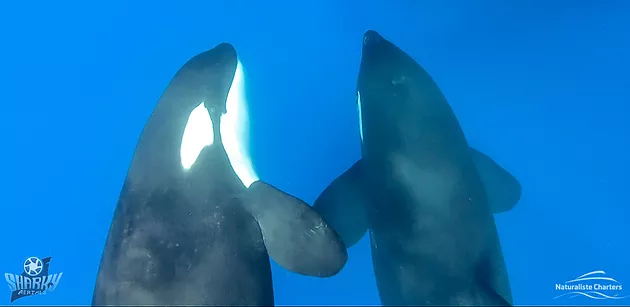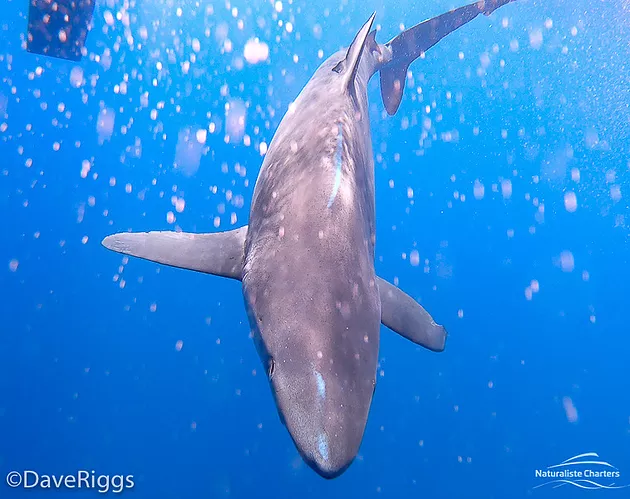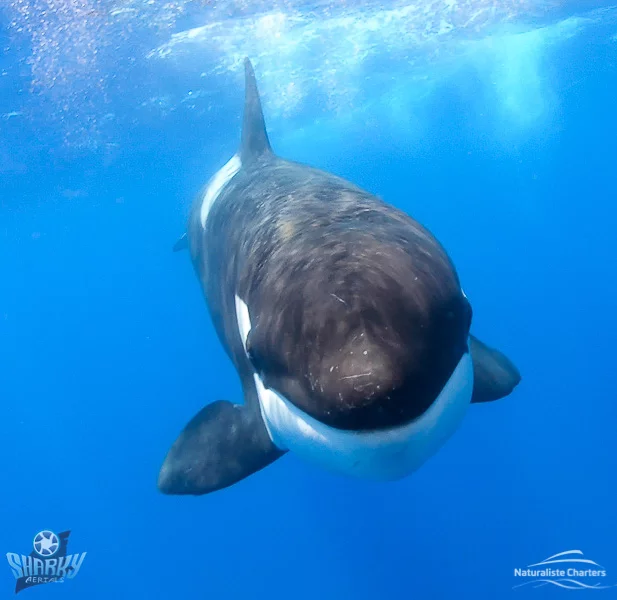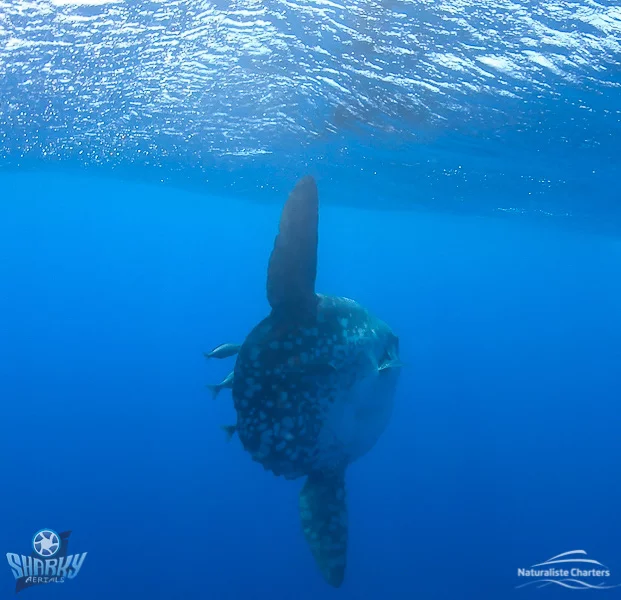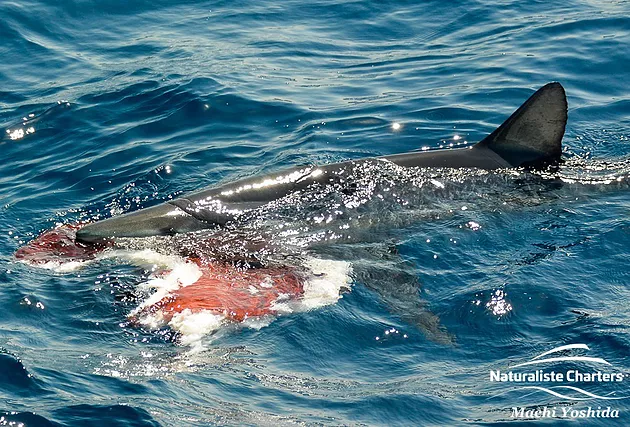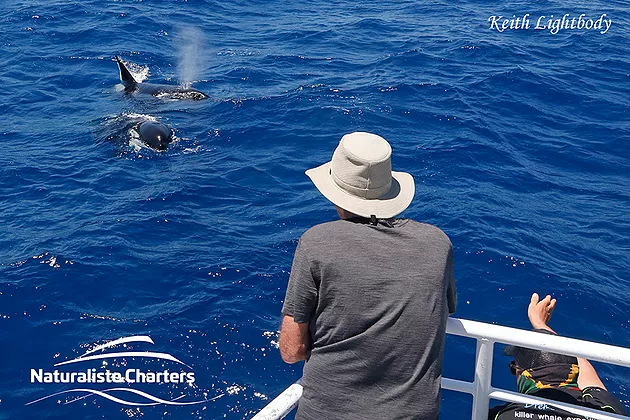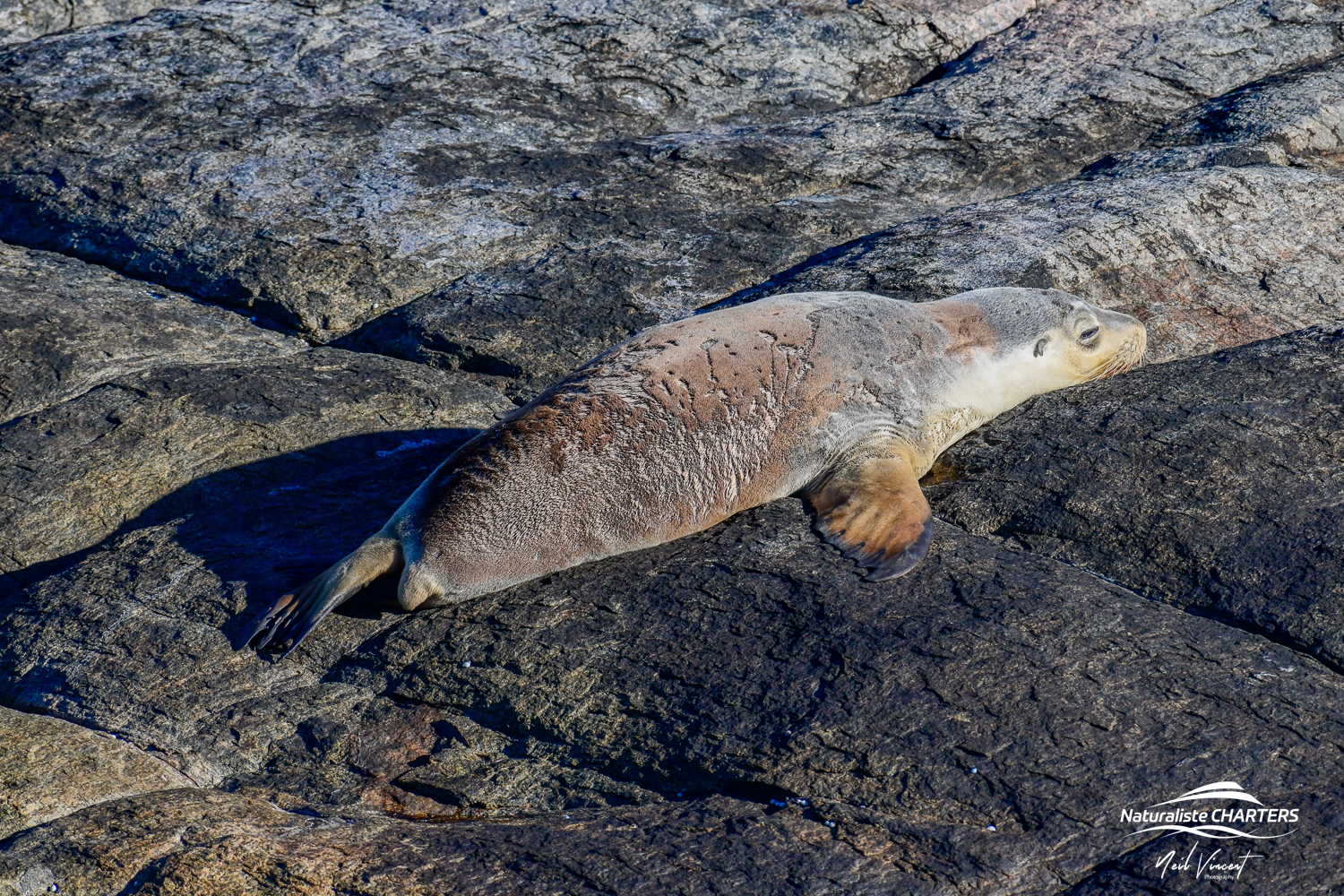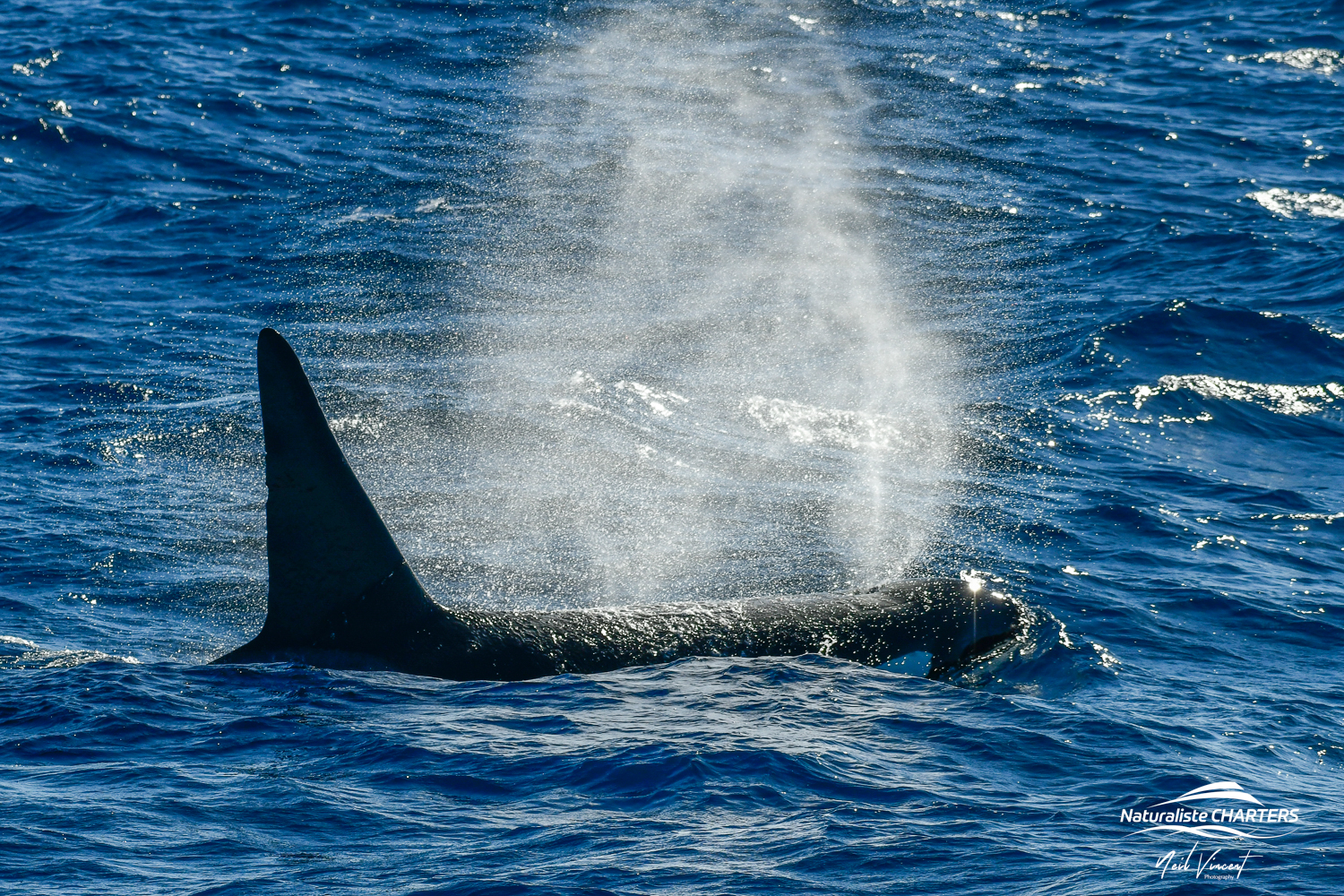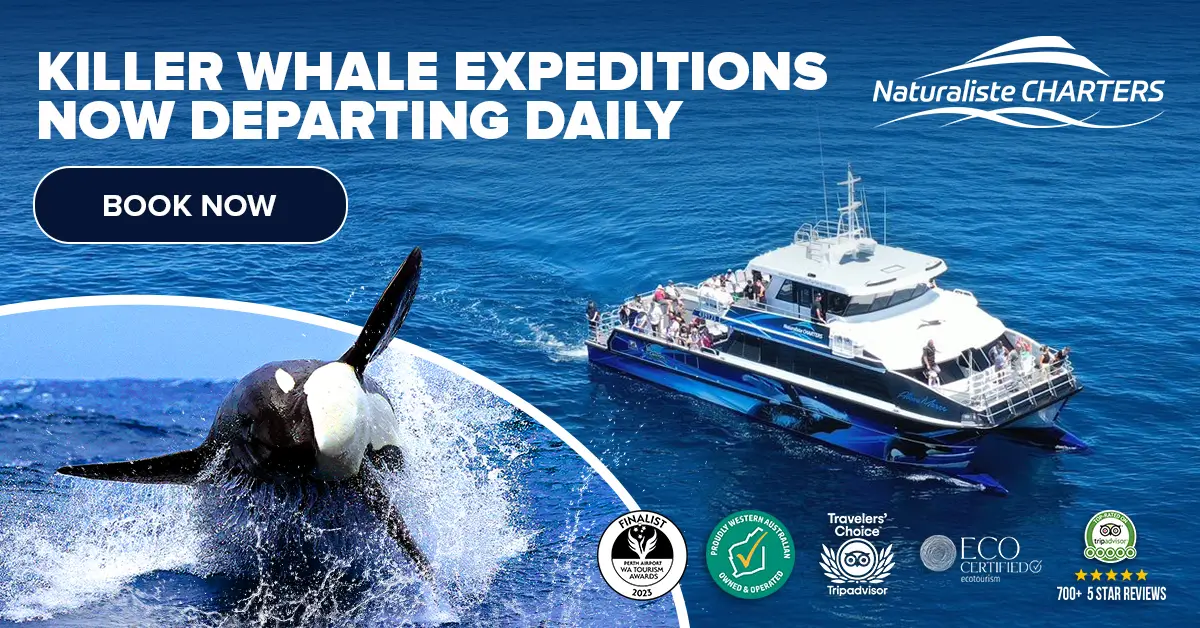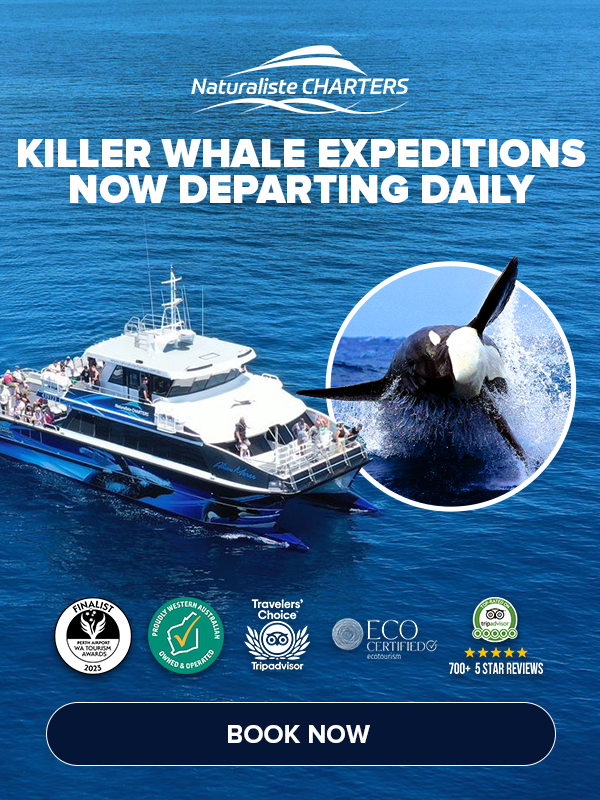Firstly, we will take you on the journey that was 20th January 2019. Below this daily whale blog from our Bremer Bay Killer Whale Expeditions will be a short mention about orca sex! All the things you want to know, without having to ask…
Today we were escorted past short beach by a pod of energetic common dolphins on our voyage out to the Canyon. As we reached the hotspot we sighted orca almost instantly! However the orca were in high hunt mode all day today! El Notchos pod displayed unconcern with the vessel as they searched the canyon for a cetacean feast! We kept searching for other pods across different areas of the canyon outside of the known “hotspot”, where we encountered Chalkies pod, whom also displayed disinterest as they were also heavily on the hunt!
The two pods in the vicinity kept their distance with a male from one pod and a female from the other making tracks for each other. At first glance the male that had split off from his pod was identified as a “sprouter”, the term used when a sub-adult males falcate (curved) fin starts to straighten out and get MUCH taller. This development occurs when the male is reaching sexual maturity (around 15 years of age). The male quickly darted over to a female from another pod where the two proceeded to approach the vessel at high speed. To our astonishment the male was indeed a “sprouter” and I do not mean his dorsal fin! It wasn’t only our eyes bulging when we encountered the semen-ly stimulated young whale whom was quite clearly endowed with ample prehensile genitalia! The males ventral view was definitive of a large pink engorgement reaching up to 1.8m, coincidently the same size as a mature males erect dorsal fin)! The pair continued to manoeuvre in a playful embrace as they proceeded to fornicate throughout the open ocean! We can only hope it ended in an ORCASM!
The deep blue sub-basin was kind to us on our journey today! We came across an array of other deep sea species in between our orca encounters! Firstly a poor dead blue penguin bobbed past the vessel! Secondly we came across the remains of red arrow squid and closely after a large piece of GIANT squid being dismantled by a swirl of birds AND two beautiful iridescent blue sharks!! As we ventured back towards home we were lucky enough to be greeted by the largest sun fish of the season with its dorsal fin standing high out of the water! The cherry on top of the what had already been an incredibly diverse tour was the dolphins that road our wake back toward Glasse Island!
Orca Sex: all you need to know, without having to ask!
You might be wondering how you ended up here. Or maybe you have come here in search of answers. Either way, what lies ahead is the most comprehensive description you will most likely ever read about orcas and sex. Orca the top apex predator known in the marine environment must take time out from hunting and playing to…procreate! These mammalian creatures have many features similar to us. Features that include, breathing air, warm-blooded, giving birth, menopause (YES! You read that right!) and of course, intercouse! For Killer Whales to produce offspring, this must be done by sexual means. Unlike many other marine creatures who can create their own clones and increase the population with a single organism, orcas need a male and a female to reproduce.
An Orca’s anatomy:
Orca’s are fast moving and agile creatures. This means that the male’s appendage, which includes the penis and testiceles are inside its body for ultimate stream-line purposes. The penis is prehensile which means it is capable of “grasping” just like a monkey’s tail. It can reach lengths of 1.8 metres! This is as tall as their dorsal fin on the opposite side of their body will grow to. The male organ unravels and swells outside of his body via a genital slit and is bright pink! Quite the contrast against their black and white bodies!
The females feature a single gential slit in which the males must navigate! This is also their birth canal and located either side are mammary glands – for nursing their newborns.
An orcas lifecycle:
From the first moments of birth, orcas are monitored and protected very closely by their family members. Mum, older siblings, aunties and cousins will all play a role in this youngsters life.
The first year is the most crucial and dangerous for a neonate (young orca). They rely solely on their mother for milk as their main food source. If their mother isn’t at full health and has enough fat on her body, she will lack the amount of milk required. This results in calf mortality which in some populations around the world, this rate can reach up to 70%! That means that only 3 in 10 orcas will survive to their 1st birthday. Australian Orcas in Bremer Bay are experiencing incredible success with their calves. A 100% success rate for the calves first year of life, which directly indicates a very healthy and fish-filled ecosystem.
The next stage of life is from 1 year to 5 years old. The young calf will begin to feed on solids mainly hunted and gathered by their family members. In these first few years, the calf will learn how to hunt and be exposed to incredible family bonds and communication that we humans cannot even comprehend.
From 10 years old, the orca juvenile is now an established and important family member. Males will begin to hang out with older male siblings and cousins, while females will assist with “child-minding”.
Sexual and physical maturity:
Female orca will begin the journey through maturity when they reach around 12 years. Although it has been found that different “ecotypes” around the world will reach these stages at slightly different ages. They begin to give off pheromones and their mother, also known as the matriarch of the pod, will communicate with other orca in the area to arrange a suitable mate. Yes, you read that right. The mother is the matchmaker! This is believed to occur to avoid any potential in-breeding as the matriarch will have more knowledge on family bonds and relations!
Males take a slightly different journey. They begin to mature physically first. Around 15 years of age their small falcate dorsal fin will “sprout”. The curved dorsal will grow at a rapid rate, reaching a peak of 1.8 metres tall. Scientists believe that the dorsal fin shows a male’s fitness. The bigger the better. It can also be used as a rudder like tool for aiding the mating process. The male must swim upside down and coordinate being next to the female apex predator. He would want to get it right!
During these years, males from the same family will actually practice their orca sex with each other! Throughout our expeditions with Australian Orca we have observed such behaviour where two males were caught in the act! At around 20 years of age they will be ready sexually to mate. Their mother, the matriarch will do the same with her son, as she does with her daughter – communicate with orca matriarchs in the area to find a suitable and unrelated mate.
The two matched orcas will then engage in orca sex over a few days up to a week! Typically mating occurs after a big predation has occurred which means there are full bellies and LOTS of socialising.
Fifteen to eighteen months down the track and the female orca will be welcoming her new calf into the big blue ocean! It is not known whether or not the father orca knows who his offspring are but it appears that he does not play a role in their life or upbringing.
Menopause:
After approximately 20 years the female orca will no longer be fertile but her role in the family is not exhausted yet. She will go through menopause and then as mentioned above play a crucial role in the education and facilitation of her calves’ lives. This includes the orca sex they will have!
So there you have it! The full run-down on orca sex!

